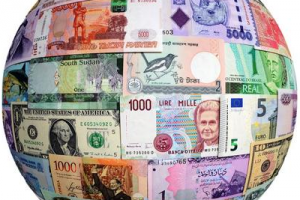Australian share investors are aware that the major indexes locally are the S&P/ASX200, and the All Ordinaries. Investors are also aware of overseas indexes such as the Dow Jones and the FTSE. But many may not be aware of how the indexes are comprised and what they represent.
Here we list the major indexes that traders use to evaluate each global market and how each index is calculated.
Dow Jones
This is an index which tracks the stock price movements of 30 large publicly owned US companies. These 30 companies are chosen by the Wall St Journal and they consider these companies to be the leaders of the US economy. The limitations of this index is that it doesn’t represent the whole market. It only tracks the 30 selected companies. It is a price weighted index which means the index is the sum of the stock prices divided by the Dow Divisor. This method of price weighing also means higher priced companies affect the index more than lower priced companies.
S&P 500
This is an index which comprises 500 large companies listed on the NYSE or NASDAQ based on market capitalisation. This means the share price is multiplied by the number of shares outstanding. The companies within this index are selected by a US Index committee maintaining the S&P 500. The market cap must be greater or equal to $6.1 billion USD. This index is considered a better representation of the US market as it is made up of more companies than the Dow Jones.
Nasdaq Composite Index
Before explaining what the Nasdaq composite entails it worth noting there are two major stock exchanges in the US, the New York Stock Exchange (NYSE) and the Nasdaq. The NYSE is the largest stock exchange in the US. This exchange differs from the NASDAQ as there are brokers physically trading on the New York Stock Exchange floor. It is similar to a house auction where brokers need to match a buyer with a seller. This exchange also facilitates 50% of the trades now electronically. NYSE consist of bigger, blue chip firms which are more established. The National Association of Securities Dealers Automated Quotation System (Nasdaq) exchange operates purely electronically where buyers and sellers are matched. It consists of stocks that are more volatile as they are less established than blue chip companies. Predominately high-tech companies in the internet or electronics area. The listing fee is lower than the NYSE so many younger companies choose to list on the NASDAQ due to the lower entry fee.
The Nasdaq Composite index measures the market capitalization-weight index of all equities listed on the NASDAQ which is approximately 3000 stocks.
Euro Stoxx 50
This index represents 50 stocks from 11 countries in Europe which as Austria, Belgium, Finland, France German, Ireland, Italy, Luxembourg and the Netherlands. The STOXX aims to track 50 of the largest and most liquid stocks in the Eurozone.
FTSE
This index is nicknamed the “Footsie” and represents the top 100 companies listed on the London Stock Exchange based on market capitalisation. The index represents 81% of the entire market capitalisation of the London Stock Exchange. Companies selected for this index must comply with nationality, free float and liquidity requirements.
Nikkei
This is also named the Nikkei 225 which is a stock market index for the Tokyo stock exchange. It tracks the top 225 blue chip companies traded on the Tokyo Stock Exchange. It a price weight index which means the value is calculated by summing up the prices of the stocks in the index and dividing them by the total number of stocks. It excludes the number of shares outstanding for the stock. The total number of stocks listed on the Tokyo stock exchange is 2,200 companies.
Shanghai A Share Stock Price Index
This is a capitalization weighted index which aims to represents all listed China A stocks on the Shanghai Stock Exchange. There are two types of stocks on the Shanghai Stock Exchange which include China A shares and China B shares. China A are shares where only domestic investors and qualified foreign institutional investors can trade. Whereas China B shares are available to domestic and foreign investors. China A shares are priced in the local Renminbi Yuan currency and B shares are priced in US dollars.
S&P/ASX 200
This is a market capitalization index representing the 200 largest stocks listed on the Australian Securities Exchange. The index is rebalanced every quarter by Standard and Poors and only companies which pass requirements in market capitalisation and liquidity will be included in the index.
NZX 50
This index represents the largest 50 stocks by market capitalisation on the New Zealand Stock market. There are a total of 174 companies listed on the NZX.
Lauren Hua is a private client adviser at Fairmont Equities.
Sign up to our newsletter. It comes out every week and its free! You can leave your email with us via the form on the right-hand side of this page.
Otherwise you can email us at mail@fairmontequities.com
Disclaimer: The information in this article is general advice only. Read our full disclaimer HERE.
Like this article? Share it now on Facebook and Twitter!

